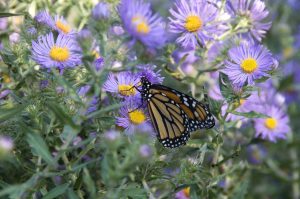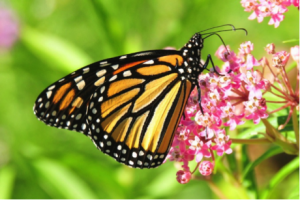The Long Flight Home

Caterpillars are finishing their feast on milkweed plants across Wisconsin and preparing to shed their skin to change into monarch butterflies. Monarch butterflies are important pollinators collecting reading plant pollen as they collect nectar. While they feed on a wide variety of plants, monarch butterflies only lay their eggs on milkweed plants.

This super generation of monarchs will spend their entire lives flying to their wintering home in Mexican state of Michoacan. Once there, they will lay their eggs and die.
The offspring of this super generation overwinters in and begins their journey back the following spring. This first generation of the new year only migrates as far as Texas and the Gulf coast where they lay eggs that spend the next month developing into larvae, caterpillars and then butterflies. The second generation continues the migration to the summer home grounds where the third and fourth generations spend the warm months feeding and breeding.
In late summer the fourth generation lays the eggs that will become the next southward bound super generation. Warm weather in September allowed monarchs to continue feeding in southern Wisconsin. This super generation is now making its way south.

There are two distinct populations of monarch butterflies, those east of the rocky mountains that winter in the mountains of central Mexico and the western monarchs that winter coastal tree groves in California and spread out across to forage and lay their eggs throughout California, Arizona, Oregon, Washington. Urbanization and extensive use of pesticides by farmers have dramatically reduced the amount of milkweed plants that western monarchs need to lay their eggs.

Our eastern monarchs, currently numbering some ten million, have been extensively studied for nearly forty years. Only recently have the western monarch butterflies received careful study. The results of that study, funded by the USFWS, are stunning. According to the study’s author, Washington State University researcher Cheryl Schultz, western monarch populations have plummeted from 10,000,000 forty years ago to approximately 300,000 today. This decline is so steep that the authors predict that western monarch butterflies have a 63% chance of extinction in the next twenty years and an 84% likelihood of extinction within the next 50 years.
Want to be involved in helping monarch butterflies? Journey North is a citizen science project that tracks the movement of monarch butterflies and other species.
Their projects provide scientist with valuable information about their movements.

